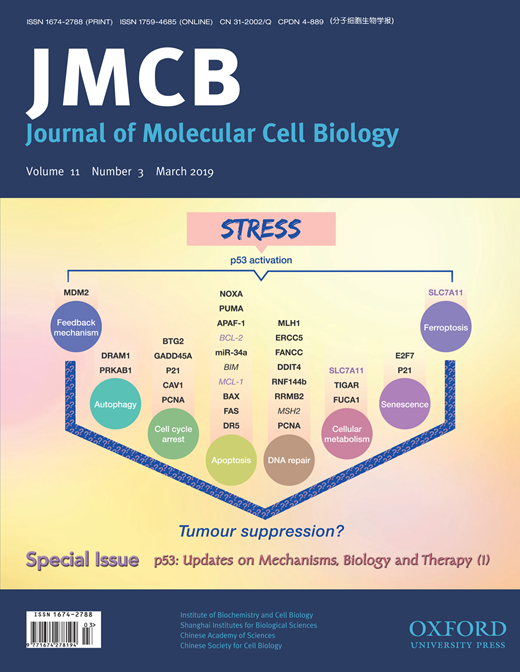p53: updates on mechanisms, biology and therapy (I)
|
A single synonymous mutation determines the phosphorylation and stability of the nascent protein
|
The role of p53 in developmental syndromes
Margot E. Bowen and Laura D. AttardiJ Mol Cell Biol, Volume 11, Issue 3, March 2019, 200-211, https://doi.org/10.1093/jmcb/mjy087Abstract | Full Text |
Discussion of some ‘knowns’ and some ‘unknowns’ about the tumour suppressor p53
Elizabeth Lieschke, Zilu Wang , Gemma L Kelly , and Andreas StrasserJ Mol Cell Biol, Volume 11, Issue 3, March 2019, 213-223, https://doi.org/10.1093/jmcb/mjy077Abstract | Full Text |
Functional relationship between p53 and RUNX proteins
Suk-Chul Bae, Arun Mouli Kolinjivadi , and Yoshiaki ItoJ Mol Cell Biol, Volume 11, Issue 3, March 2019, 224-230, https://doi.org/10.1093/jmcb/mjy076Abstract | Full Text |
The long and the short of it: the MDM4 tail so far
Sue Haupt, Javier Octavio Mejı´a-Herna´ndez , Reshma Vijayakumaran , Simon P. Keam ,and Ygal HauptJ Mol Cell Biol, Volume 11, Issue 3, March 2019, 231-244, https://doi.org/10.1093/jmcb/mjz007Abstract | Full Text |
Small molecule activators of the p53 response
Marcus J. G. W. Ladds and Sonia Laı´nJ Mol Cell Biol, Volume 11, Issue 3, March 2019, 245-254, https://doi.org/10.1093/jmcb/mjz006Abstract | Full Text |
Drugging in the absence of p53
Obed Akwasi Aning and Chit Fang CheokJ Mol Cell Biol, Volume 11, Issue 3, March 2019, 255-264, https://doi.org/10.1093/jmcb/mjz012Abstract | Full Text |
